Recruiting Faculty
RECRUITING FACULTY FALL 2022

Anna Abraham
Professor, Educational Psychology
Research Interests
- Neuroscience of creativity (fMRI; EEG/ERP; neuropsychology)
- Psychology of creativity (cognition; development across lifespan; personality)
- Cross-disciplinary study of the imagination (aesthetics, imagery, intentionality, altered states)
Professor Abraham studies the cognitive and brain basis of creativity and other aspects of the human imagination including the reality-fiction distinction, mental time travel, self-referential and social cognition, and mental state reasoning. Her educational and professional training has been within the disciplines of psychology and neuroscience, and she has worked across a diverse range of academic institutions and departments the world over, all of which have informed her multidisciplinary focus.

Arthi Kanthasamy
Professor, Physiology and Pharmacology
Research Interests
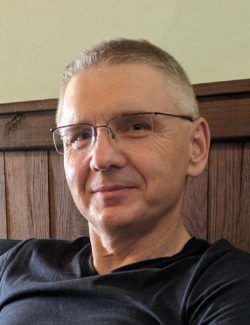
Krzysztof Czaja
Professor, Veterinary Biosciences & Diagnostic Imaging Department
Research Interests
- Anatomy
- Autoimmunity
- Biomarkers
- Histology
- Immunochemistry
- Neuroanatomy
- Neuroscience
- Obesity
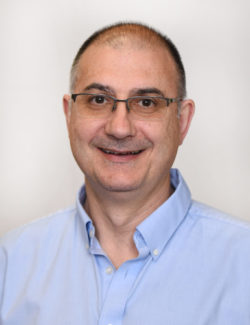
Nikolay ``Nick`` Filipov
Professor, Physiology and Pharmacology
Research Interests
- Neurotoxicology
- Neuroimmunology — communication of the nervous and immune systems in health and disease
- Basal ganglia disorders
Major research focus in our laboratory is on the communication between the nervous and immune systems in health and disease, as well as on the role of the environment in modulation of this communication. In particular, we are interested in the role of peripheral and central inflammation in basal ganglia disorders such as Parkinson’s disease. Several environmental toxicants, some of which modulate inflammatory pathways and affect the basal ganglia, are subject of intense investigation by our team. In our studies, we incorporate a wide array of experimental techniques ranging from molecular biology, cell culture, and organelle-specific proteomics to rodent behavioral studies
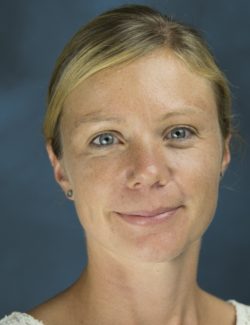
Claire de La Serre
Associate Professor, Nutritional Sciences
Research Interests
Dr. de La Serre research centers on the understanding and alleviation of diet-induced chronic diseases, in particular the development and prevention of obesity. Her studies have focused on the role of gastrointestinal (GI) tract post-ingestive cues in overeating. Her laboratory uses animal models, including germ-free rodents, to investigate the pathways by which chronic consumption of energy-dense palatable food promotes overeating. Current studies examine diet-induced dysregulation of gut-brain communication and the role of the gut microbiota. For more information, see the Gastrointestinal Neurophysiology Laboratory.

Jae-Kyung Lee
Assistant Professor, Physiology and Pharmacology
Research Interests
- Neuroinflammation
- Microglia biology
- Regulator of G-protein Signaling (RGS)
- Neurodegenerative diseases
- Parkinson’s disease
- Multiple Sclerosis
- Experimental autoimmune encephalomyelitis (EAE)
My research was focused on understanding how inflammation influences neurodegenerative diseases. Neuroinflammation has been strongly implicated in the pathophysiology of many neurodegenerative diseases. My goal is to identify novel modulators of innate immune responses in CNS and to provide a novel avenue for therapeutic intervention for neurodegenerative diseases including Alzheimer’s and Parkinson’s disease (PD), multiple sclerosis (MS).
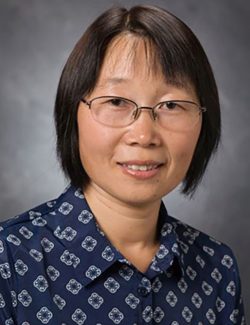
Hongxiang Liu
Associate Professor, Animal & Dairy Science | Regenerative Bioscience Center
Research Interests
Taste buds are sensory organs that consist of 60-100 specialized cells that have both neural and epithelial features and function to transduce gustatory stimuli into neural signals. Studies on fundamental issues including taste bud cell origin and renewal will bring new information and perspective to the field for how taste sensitivity is developed and maintained. Taste buds in the mammalian tongue reside in three types of taste papillae: fungiform, circumvallate, and foliate. Each type of taste papillae has its own unique spatial and morphological features, but all are similarly comprised of an epithelium covering a connective tissue core, with nerve fibers traversing to innervate the taste buds. The unique topographic pattern of taste papillae and neuro-epithelial features of taste buds provide a unique model for developmental biology and regenerative medicine studies. To demonstrate the origin of taste bud cells and the regulatory signaling pathways responsible for the development of taste papillae and taste buds, we use whole embryo and tongue organ culture systems, as well as transgenic mouse lines for functional and morphological analyses. We are also expanding our research program to include the identification of progenitor/stem cells of taste buds in non-mammalian vertebrates, as well as translational studies using human stem cells and tissues.
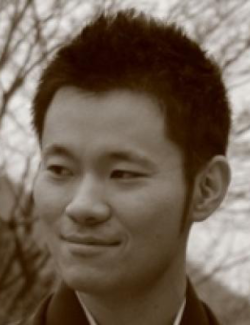
Daichi Kamiyama
Assistant Professor, Cellular Biology
Research Interests
Our long-term objective is to understand how cellular communication translates into neural morphogenesis. We are currently focusing on studying the functions of Dscam inter-neural contact in neural morphogenesis. We are also developing imaging toolkits for the systematic study of contact-dependent signaling pathways, including a Drosophila collection of fluorescent tagged adhesion molecules to map to specific neuronal processes as well as a contact-dependent expression system to identify partner cells.
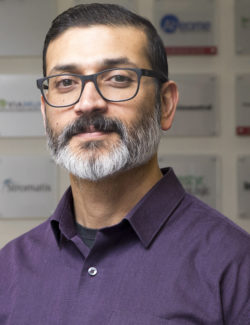
Lohitash Karumbaiah
Associate Professor, Animal &Dairy Science | Regenerative Bioscience Center
Research Interests
Carbohydrates are an important and often under appreciated class of biological macromolecules that play important roles in development, and in repair and regeneration post-injury. Defects in carbohydrate biosynthesis and alterations in carbohydrate composition are known to result in several undesirable outcomes such as developmental abnormalities, cartilage breakdown and reduced myocardial tissue integrity to name a few. Carbohydrates also play important roles in a number of biological processes, a few of which include: binding trophic factors and cytokines, controlling stem cell differentiation, cell fate and self-renewal, directing neuronal path-finding, and protecting and stabilizing proteins. While bio-compatible synthetic polymer and peptide based biomaterials have gained widespread acceptance for regenerative medicine applications, the potential of natural carbohydrate based biomaterials for regenerative medicine has not been fully explored. My research integrates methodologies from engineering disciplines and biology, and uses an interdisciplinary approach to help understand, manipulate and design novel carbohydrate based biomaterials for spinal cord injuries (SCI), traumatic brain injuries (TBI) and neural interfacing applications.
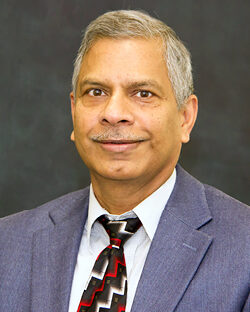
Ramana M Pidaparti
Professor, College of Engineering
Research Interests
Our research also focusses on developing novel machine learning algorithms in predicting mechanical ventilation parameter settings for Canines and Felines,in assisting the doctors for a given patient condition. Modeling and Simulation of Traumatic Brain Injury from MRI images, risk analysis, and risk prediction is another ongoing research in the lab. We are also developing novel swarm intelligence based algorithms applied in optimization and self-assembly.

Rachel Roberts-Galbraith
Assistant Professor, Cellular Biology
Research Interests
After injury, an organism must mount a series of responses to minimize and — if possible — repair damage. Some organisms regenerate poorly, while others (including humans) regenerate to differing degrees depending on the tissue that is damaged. Rarely, organisms possess the ability to repair or regenerate any missing tissue. Organisms with remarkable regenerative power include planarians, which are flatworms that can regrow missing tissues after a wide range of amputations or injuries.
In our lab, we use planarians to understand how regeneration proceeds successfully in nature. In particular, we are interested in how a planarian regenerates its central nervous system (CNS), making new neurons and connecting them faithfully again and again. To understand how planarians successfully regenerate the CNS, we are currently pursuing projects to answer the following questions:
- What signals promote planarian regeneration, both generally and specifically for the CNS?
- How do the pluripotent stem cells within the planarian body make the decision(s) to become a neuron? Does this happen in the same way or in different ways in regeneration and in development/homeostasis?
- How are new neurons arranged properly in space and how do they make the correct connections with their partners?
- How are glial cells in the nervous system regenerated? And what role(s), if any, do they play in the regeneration of the CNS?
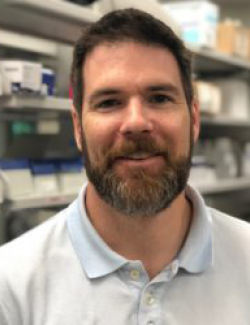
Jesse Schank
Associate Professor, Physiology and Pharmacology
Research Interests
The Schank Lab studies the interaction between stress, neuropeptides, and drug seeking behavior. The primary receptor system that we study is the neurokinin-1 receptor (NK1R), and we examine the function that it plays in the extended amygdala brain circuitry. We aim to identify how these processes influence drug/alcohol seeking behavior, anxiety, and depression.
Main projects in the lab include:
- The neurocircuitry by which the NK1R mediates stress-induced reinstatement of alcohol seeking
- The NK1R neurocircuitry that underlies the impact of social defeat stress on depression-like behavior and escalated alcohol consumption
- The role of the NK1R in oxycodone self-administration, stress-induced reinstatement, and sex differences in drug seeking
- The mechanisms of sex differences in aversion-resistant alcohol intake
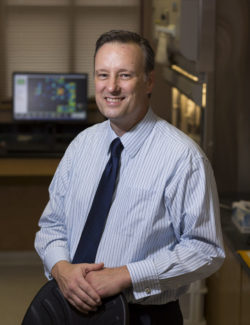
Steven Stice
Professor, Eminent Scholar, Director of the Regenerative Bioscience Ctr. (RBC)
Research Interests
Exosome-based regenerative therapies for the treatment of CNS and neurodegenerative disorders, namely Stroke and TBI
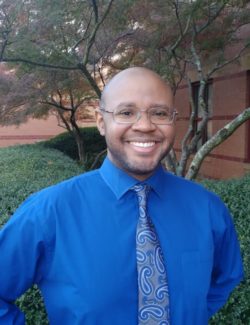
Franklin West
Associate Professor, Animal & Dairy Sciences
Research Interests
Stroke and traumatic brain injury (TBI) are leading causes of long-term disability and death in the United States. Stroke is the number one cause of long-term disability and the fourth leading cause of death and has a significant impact on the elderly. TBI has been labeled a silent epidemic and has become the signature injury of the wars in Iraq and Afghanistan. In addition, young children injured in falls and car accidents are one of the most affected groups, which can lead to lifelong cognitive, behavior and motor function deficits. Dr. West is broadly interested in regenerative therapies to treat stroke and TBI. His research has recently focused on the development of induced pluripotent stem cell derived neural stem cells (iNSCs) and extracellular vesicles as novel multimodal neuroprotective and regenerative therapeutics.

Jing Xu
Assistant Professor, Kinesiology
Research Interests
- Behavoral and cognitive components of motor skill
- Learning and control principles of motor behavior
- Neural substrates for motor skill
- Factors that influence rehabilitation of motor function
Understanding how humans learn complex motor skills, how skills are maintained across age, and how to restore them after neuromuscular injuries; identifying behavioral, cognitive, and neural components essential for hand dexterous function; deriving learning and control principles that support the acquisition and production of dexterous movement; exploring factors that influence rehabilitation; long-term goal is designing effective therapies to help patients regain their motor skills
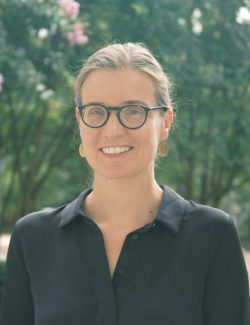
Nadja Zeltner
Assistant Professor, Biochemistry & Molecular Biology, and Cellular Biology Center for Molecular Medicine
Research Interests
The Zeltner lab has three main research interests, with the common goal to advance the understanding of human disorders and find novel treatments. We are using human pluripotent stem cells (hPSCs) to generate cell types specifically affected in disorders of the peripheral nervous system (PNS). These cells are utilized to establish human in vitro disease models to gain molecular mechanistic insight into the diseases.
